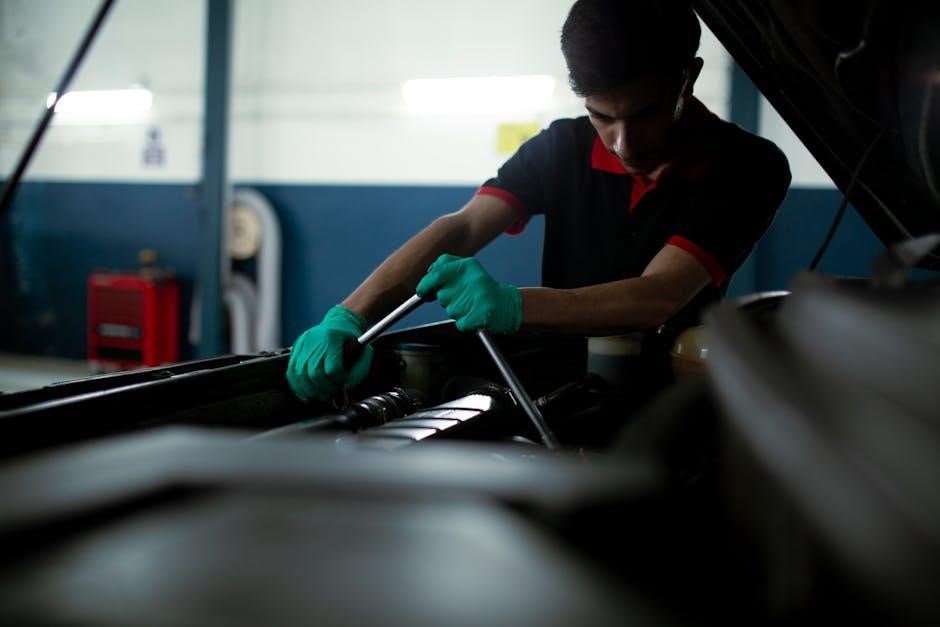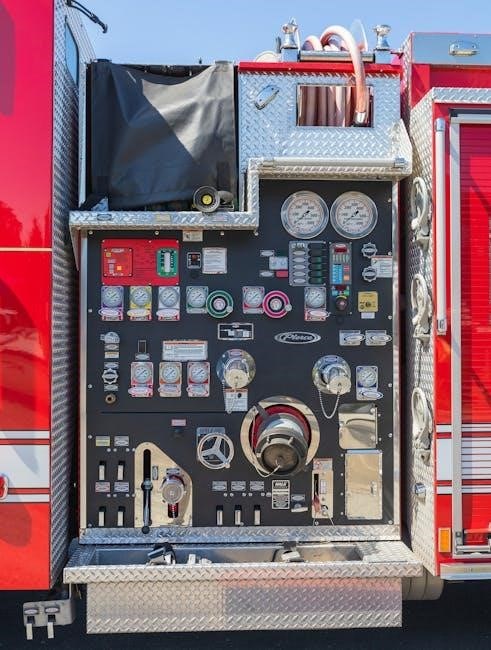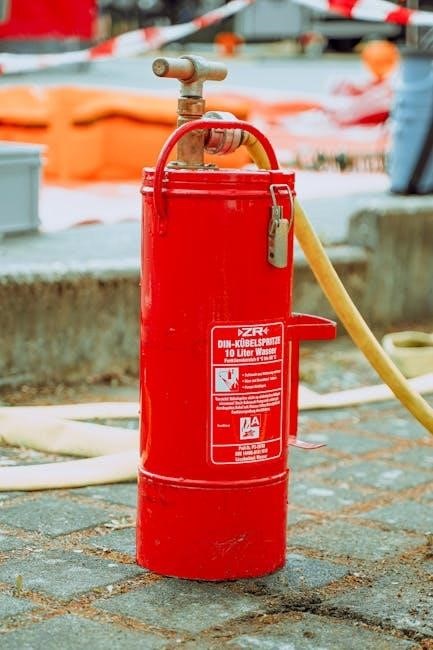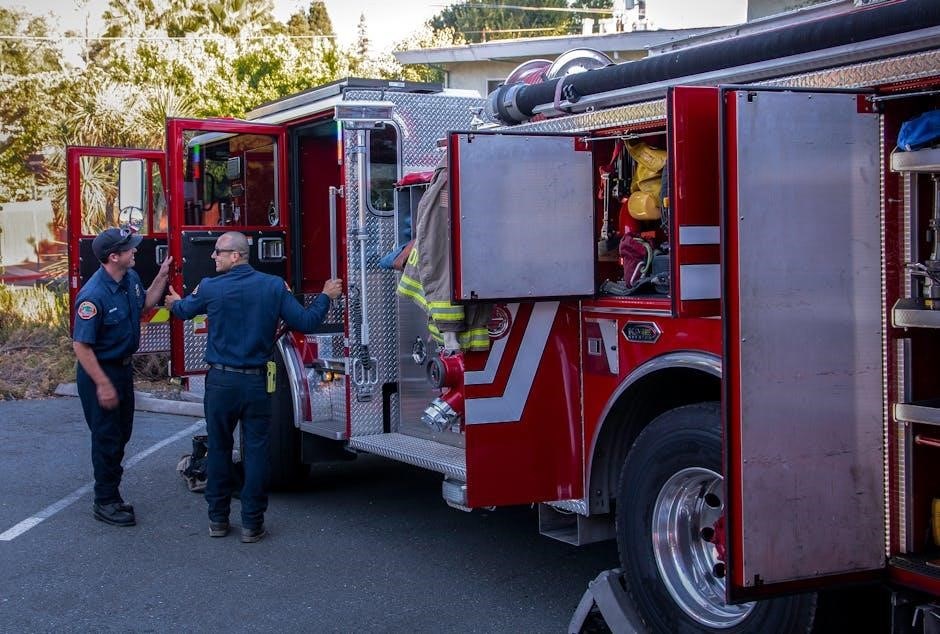Fire Sprinkler Inspection Checklist PDF: A Comprehensive Guide
This comprehensive guide provides a detailed overview of fire sprinkler inspection checklists. It is designed to help you customize your checklist to fit your specific business and ensure regular inspections. Proper documentation is key for record keeping.
Fire sprinkler systems are critical for life safety and property protection. Regular inspections are essential to ensure they function effectively in an emergency. This guide provides an overview of the fire sprinkler inspection process, emphasizing the importance of using a detailed checklist. The checklist should be a starting point, customized to fit the specific needs of your business and the type of sprinkler system installed. Inspections help identify potential issues early on, preventing costly repairs and ensuring the system is ready to operate when needed. Properly maintained systems are key to reducing fire risks.
Importance of Regular Inspections
Regular fire sprinkler inspections are vital for maintaining a safe environment. These inspections ensure that all components of the fire sprinkler system are in good working order, ready to suppress a fire effectively. Neglecting inspections can lead to system failures, resulting in severe consequences during a fire. Inspections involve checking for obstructions, corrosion, and proper valve operation. They also confirm that the system is properly connected to a reliable water supply. Regular inspections can also identify issues like leaks, ensuring prompt corrective actions. A consistent inspection schedule will minimize risks. These inspections ultimately safeguard lives and properties, emphasizing the importance of regular maintenance.
Types of Fire Sprinkler Systems
Understanding the different types of fire sprinkler systems is crucial for effective inspections. Wet pipe systems, the most common type, are filled with water at all times, allowing for immediate response. Dry pipe systems, used in areas prone to freezing, contain pressurized air or nitrogen. Pre-action systems require a fire detection event before water enters the pipes. Deluge systems release a large volume of water simultaneously through all sprinkler heads. Each system requires specific inspection procedures. Knowing the system type ensures that the appropriate components are checked and maintained. Properly identifying the system is vital for compliance. Different systems are suited for different environments and each needs tailored inspections.

Key Components of a Fire Sprinkler Inspection Checklist
A thorough fire sprinkler inspection checklist must include control valves, sprinkler heads, alarm valves, and fire department connections. These components are critical for the system’s proper operation and effectiveness during a fire.

Control Valves: Ensuring Proper Operation
Control valves are essential components of a fire sprinkler system, regulating water flow to the sprinkler heads. Ensuring their proper operation is paramount for effective fire suppression. Inspections must confirm that valves are open, locked, and free from obstructions. Any locked valves must be noted, and if unlocked, they should be relocked immediately.
Inspectors should check for physical damage, corrosion, and leaks around the valve. Verifying the valve’s accessibility and clear labeling is also crucial. Regular checks prevent potential malfunctions that could compromise the system’s ability to respond during a fire emergency, maintaining optimal functionality. Properly functioning control valves ensure water flows correctly to the sprinklers when needed.
Sprinkler Heads: Checking for Obstructions and Damage
Sprinkler heads are the final point of fire suppression, making their condition critical; Regular inspections must verify they are free from obstructions like paint, dust, or decorations, which can impede water discharge. Check for physical damage, corrosion, or leaks around the sprinkler head. Ensure that the correct type of sprinkler head is installed for the specific hazard area.
Inspectors should also confirm that sprinkler heads are not covered or blocked by storage or equipment. Any damaged or obstructed sprinkler heads must be replaced immediately. Proper maintenance and clear accessibility ensure that sprinkler heads function effectively to quickly suppress fires, protecting lives and property. The test location(s) should be acceptable.
Alarm Valves: Leakage and Functionality
Alarm valves are a critical component in a fire sprinkler system, responsible for initiating alarms upon water flow. During inspections, verify alarm valves are free from leakage around the valve seat, retard chamber, and alarm drains. A malfunctioning alarm valve can result in delayed or failed alarm activation.
Inspectors should check the valve’s functionality by simulating a water flow and confirming the alarm sounds promptly. The retard chamber should operate correctly, preventing false alarms due to pressure surges. Ensure all associated components, such as pressure gauges and alarm switches, are in good working order. Any issues must be addressed immediately to maintain reliable fire detection and suppression.
Fire Department Connections: Accessibility and Condition
Fire Department Connections (FDCs) are essential for firefighters to supplement the water supply to the sprinkler system. Ensure FDCs are readily accessible and unobstructed by landscaping, vehicles, or other barriers. Clear markings should identify the FDC’s purpose and the system it serves.
Inspect the FDC for physical damage, such as broken caps, cracked swivels, or corrosion. Caps should be in place to prevent debris from entering the system. Threads should be clean and undamaged to allow for secure hose connections. Internal clapper valves must operate freely to permit water flow into the system when needed. Regular inspections guarantee firefighters can efficiently utilize FDCs during emergencies.

Frequency and Scope of Inspections
Regular fire sprinkler inspections are crucial. Monthly inspections involve basic checks, while quarterly inspections require more detailed assessments. These inspections ensure the system’s reliability and compliance with fire safety standards, ultimately protecting lives and property.
Monthly Inspections: What to Look For
Monthly inspections of fire sprinkler systems are essential for maintaining their operational readiness. Key areas to focus on include verifying that all control valves are open and properly locked or supervised. Inspect alarm valves for any signs of leakage from retard chambers or alarm drains. Ensure that all valves are easily accessible and free from obstructions, documenting any issues found.
Furthermore, check the gauges to confirm they are within the normal operating range. A thorough visual inspection helps identify potential problems early on. Immediate action should be taken to address any deficiencies to uphold the integrity of the fire sprinkler system.
Quarterly Inspections: More Detailed Checks
Quarterly inspections of fire sprinkler systems involve a more thorough examination than monthly checks. These inspections typically include testing various components, although not necessarily disassembling or removing any equipment unless done by a qualified fire sprinkler company. During quarterly inspections, focus on verifying the accessibility and condition of fire department connections, ensuring they are unobstructed and ready for use.
Inspect sprinkler heads for any signs of damage, corrosion, or obstructions that may impair their functionality. Check alarm valves for proper functionality and absence of leaks. Confirm that all components are in good working order for optimal fire protection.

Customizing Your Fire Sprinkler Inspection Checklist
Tailoring your fire sprinkler inspection checklist is vital. Adapt it to your business’s unique needs and incorporate relevant codes and standards. This ensures effective and compliant fire protection measures are in place.

Adapting to Specific Business Needs
To effectively customize your fire sprinkler inspection checklist, consider the unique aspects of your business. Different businesses have different fire risks and operational requirements. For example, a manufacturing facility will have different hazards than an office building. Therefore, your inspection checklist should address these specific concerns.

Review your facility’s layout, processes, and materials to identify potential fire hazards. Include specific inspection points that focus on these areas. Ensure that the checklist is comprehensive enough to cover all critical components of your fire sprinkler system while remaining practical and easy to use. Regular updates and revisions will ensure the checklist remains relevant.
Including Relevant Codes and Standards
When creating your fire sprinkler inspection checklist, it is essential to incorporate relevant fire safety codes and standards. These codes, such as those from the National Fire Protection Association (NFPA), provide guidelines for the inspection, testing, and maintenance of fire sprinkler systems. Adhering to these standards ensures that your system meets legal requirements and operates effectively.

Refer to the specific codes applicable to your jurisdiction and industry. Include checklist items that verify compliance with these codes, such as proper sprinkler head spacing, valve operation, and alarm system functionality. Regularly update your checklist to reflect any changes in codes and standards. This proactive approach helps maintain safety and avoid potential violations.

Post-Inspection Procedures and Documentation
After completing a fire sprinkler inspection, meticulous record-keeping is vital. Document all findings, noting any deficiencies. Implement corrective actions promptly and keep detailed records of all maintenance and repairs performed on the system.
Record Keeping and Reporting
Accurate and thorough record-keeping following a fire sprinkler system inspection is paramount for compliance and safety. Documentation should include the date of inspection, inspector’s credentials, and detailed observations. Note the condition of all components, such as valves, sprinkler heads, and connections. Any deficiencies or issues identified must be clearly recorded.

Furthermore, the type of system (wet or dry) should be specified. This detailed record serves as a reference point for future inspections and maintenance. Reporting these findings to the appropriate parties, such as building management or fire safety officials, is essential. Consistent reporting ensures everyone is aware of the system’s status, fostering a safer environment. Proper documentation helps demonstrate due diligence.
Addressing Deficiencies and Corrective Actions
Upon identifying deficiencies during a fire sprinkler system inspection, prompt and decisive corrective actions are crucial. Any issues, such as obstructed sprinkler heads, leaking valves, or inaccessible fire department connections, must be addressed immediately. A detailed plan outlining the steps to rectify each deficiency should be created. This plan should include timelines and assigned responsibilities.
Qualified fire sprinkler contractors should be engaged to perform necessary repairs or replacements. All corrective actions must be documented thoroughly, including the date of completion and the name of the contractor. A follow-up inspection should be conducted to verify that the deficiencies have been properly resolved. Maintaining a clear record of all corrective actions demonstrates a commitment to fire safety and compliance with regulations. Neglecting deficiencies can compromise the system’s effectiveness.
